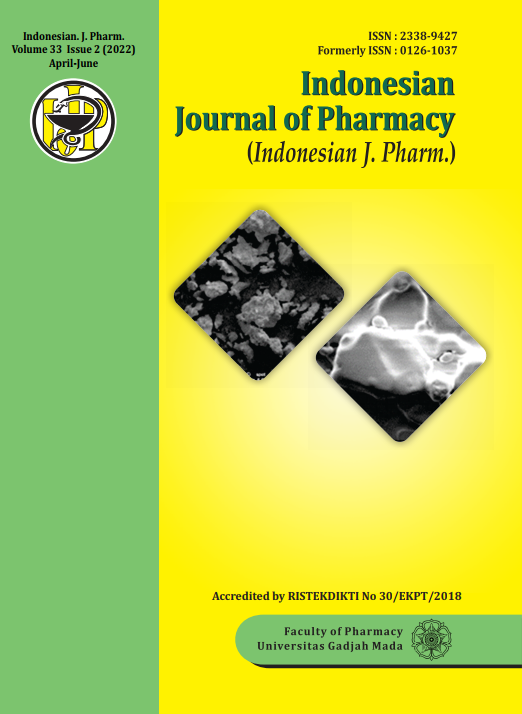Development of Warfarin Safety Monitoring System at Primary Health Care grounded on Chronic Care Model
Abstract
Warfarin, an anticoagulant with high risk on the fatal adverse effects, the safety monitoring system in primary health care is needed for patients in the community. This study aimed to investigate problems of warfarin use, to discover factors related to the blood clotting, and to develop a safety monitoring system for warfarin. A mixed method was conducted in two phases. Phase one consisted of home visit for 104 patients with warfarin which aimed to investigate use problems. Phase two; the focus groups included all stakeholders were done which aimed to develop a community-based system grounded on the Chronic Care Model (CCM). The warfarin monitoring system was implemented for a month and briefly evaluated the stakeholders’ satisfaction on it. The results revealed that: Phase one, 38.5% patients with warfarin at home had missed their treatment appointments. Their warfarin compliance was 91.1+21.3%. 53.5% had unused warfarin at home; 37.4% had inappropriate warfarin storage; 13.1% suffered the side effect of minor bleeding; 17.3% potentially had warfarin-herb interactions; 61.3% experienced drug-warfarin interaction. Two factors significantly affecting on the International Normalized Ratio (INR) and %Time in Therapeutic Range (%TTR) were inappropriate warfarin dosages and taking other medications. %TTR was influenced by warfarin compliance. Stage two, the safety monitoring system and protocol were created using CCM. The developed system composed of six elements that were joint operation of primary health care personnel and inter-professional team of the hospital. This promoted the continuity of services from hospital to community. After one-month implementation by an inter-professional team, all three groups of stakeholders were satisfied with its results. We concluded that the main problem afflicting warfarin patients was missed treatment appointments. Receiving extra medicines from other services, inappropriate dosage, and non-compliance. The developed warfarin monitoring system covered patients in primary health care, and all stakeholders were satisfied on its outcomes.
References
Cherngyooth K., Oba N., Laksomya T. (2012). Caring outcomes of patients with type 2 diabetes by contracting unit of primary care, Naresuan University Hospital. Journal Nursing and Health Sciences, 6(2), 110–21. The Heart Association of Thailand under the Royal Patronage. 2011. Patient treatment guidelines for oral anticoagulant drugs. Bangkok: National Health Security Office (NHSO);. http://www.thaiheart.org/
Davy C., Bleasel J., Liu H., Tchan M., Ponniah S., Brown A. (2015). Effectiveness of chronic care models: opportunities for improving healthcare practice and health outcomes: a systematic review. BMC Health Serv Res, 15, 194. DOI: 10.1186/s12913-015-0854-8
Eickhoff C., Griese-Mammen N., Mueller U., Said A., Schulz M. (2021). Primary healthcare policy and vision for community pharmacy and pharmacists in Germany. Pharmacy Practice, Jan-Mar, 19(1), 2248.
Frances A. (2021). Patients are at risk of falling through gaps in anticoagulation care — but pharmacy can help. The Pharmaceutical Journal. DOI:10.1211/PJ.2020.20208409
Glenn N. Levine. et al. (2016). ACC/AHA Guideline Focused Update on Duration of Dual Antiplatelet Therapy in Patients With Coronary Artery Disease: A Report of the American College of Cardiology/American Heart Association Task Force on Clinical Practice Guidelines: An Update of the 2011 ACCF/AHA/SCAI Guideline for Percutaneous Coronary Intervention, 2011 ACCF/AHA Guideline for Coronary Artery Bypass Graft Surgery, 2012 ACC/AHA/ACP/AATS/PCNA/SCAI/STS Guideline for the Diagnosis and Management of Patients With Stable Ischemic Heart Disease, 2013 ACCF/AHA Guideline for the Management of ST-Elevation Myocardial Infarction, 2014 AHA/ACC Guideline for the Management of Patients With Non–ST-Elevation Acute Coronary Syndromes, and 2014 ACC/AHA Guideline on Perioperative Cardiovascular Evaluation and Management of Patients Undergoing Noncardiac Surgery. Circulation 2016; 134(10), e123-e155. https://doi.org/10.1161/CIR.0000000000000404
Grunau B., Wiens M., Harder K. (2011). Patient self-management of warfarin therapy pragmatic feasibility study in Canada primary care. Can Fam Physician, 57, e292-8. https://www.ncbi.nlm.nih.gov/pmc/articles/PMC3155464/
Jittsue A., Yeephu S., Potaros T., Sekkhunthod J., Timkorn P. (2015). Study of knowledge and drug related problems of warfarin at outpatient Vachiraphuket Hospital. SongklaNakarin Medical Journal, 33(2), 83–92. https://medinfo.psu.ac.th/smj2/33_2_2015/3_apichart.pdf.
Katemateegaroon D., Jarernsiripornkul N., (2002). Warfarin-related problems: implementation of anticoagulation clinic. Srinagarind Medical Journal, 17(4), 281-288. http://www.smj.ejnal.com/e-journal/showdetail/showpdf.php?file_pdf=35 9_Wafarin _Relate _Problem17_4.pdf&art_id=359
Luecha W., Benjawattananon S., Pesee K., Rakmani P. (2011). The development of health care system for diabetes mellitus patients in Chaiyaphum Hospital. Journal of Nursing Division, 38(1), 31–41.
McClay M. (2020). Management of patients currently on warfarin during Covid-19. Specialist Pharmacy Service, April 1. https://www.sps.nhs.uk/articles/management-of-patients-currently-on-warfarin-during-covid-19/
Peerapattanapokin V., Ajalanond C., and Sanprasert K. (2018). Prevalence of Drug-drug Interactions among Outpatients on Anti-platelet or Anticoagulant Therapy at Emergency Department, Phramongkultklao Hospital. Royal Thai Army Medical Journal, 71(2), 87–93.
Saengsuwan S., Tongbai S., Kangkan P., Apisakulroj S., Saramunee K., Phimarn W. (2019). Factors affecting INR level control and efficacy of pill boxes on medication adherence and INR level control in warfarin receiving patients. Journal of Thai Pharmacy Practice, 11(1), 50–60. https://he01.tci-thaijo.org/index.php/TJPP/article/view/171353/123101
Stafford L., Van Tienen EC., Bereznicki LRE., & Peterson GM. (2012). The benefits of pharmacist-delivered warfarin education in the home. International Journal of Pharmacy Practice, 20(6), 384–389.
Wangsook P., Kittiboonyakun P., Sookaneknun P. (2014). Evaluation of multidisciplinary health care program for patients using warfarin at Health Promotion Sub-District Hospitals. Thai Journal of Pharmacy Practice, 6 (2), 92–105. https://he01.tci-thaijo.org/index.php/TJPP/ article/view/169467/121915
Wittayachanyapong S., Lepawit B., Chumworathayi P., Tiamkao S., Jitpimolmard S. (2003). Intracranial hemorrhage caused by warfarin in srinagarind hospital. I-San Journal of Internal Medicine, 2, 32-43.
Witt DM., Clark NP., Kaatz S., Schnurr T., and Ansell JE. (2016). Guidance for the practical management of warfarin therapy in the treatment of venous thromboembolism. J Thromb Thrombolysis. 41, 187–205. DOI: 10.1007/s11239-015-1319-y
Yomsriken P., et al. (2017). Factors affecting the control of INR level and the occurrence of bleeding in patients on warfarin Warinchamrab Hospital. Isan Journal of Pharmaceutical Science. ,30, 301-310.








